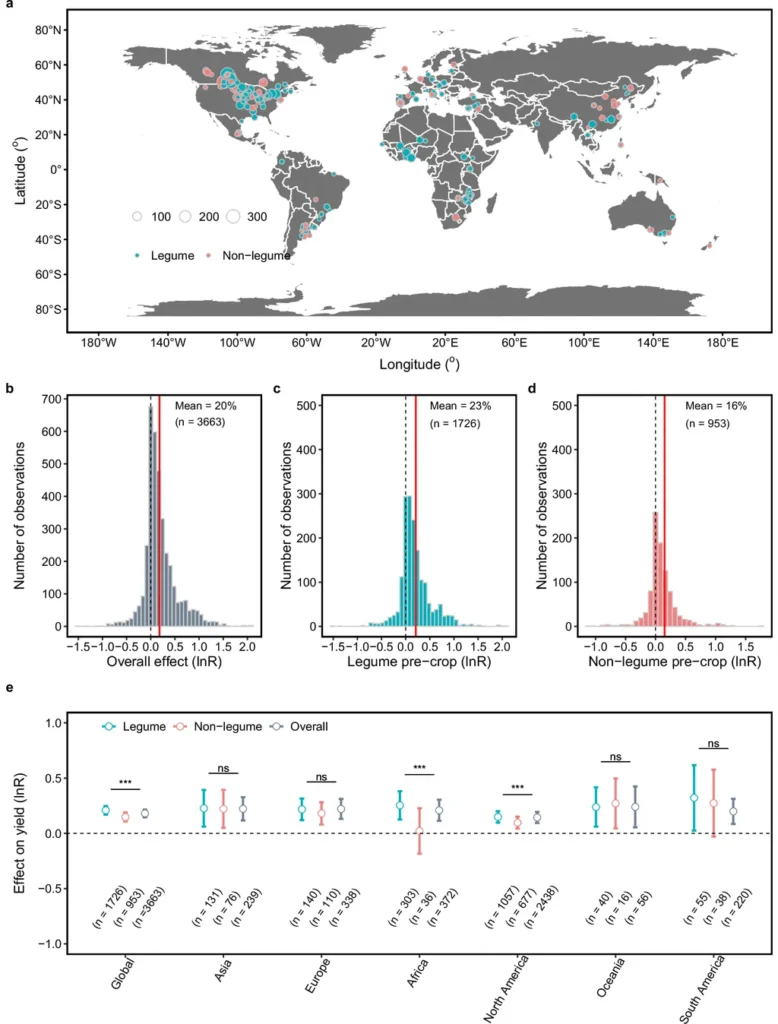In a groundbreaking study published in *Nature Communications*, researchers have unveiled the multifaceted benefits of crop rotations, offering a promising pathway to enhance agricultural yields, nutritional value, and revenue simultaneously. The meta-analysis, led by Shingirai Mudare from the State Key Laboratory of Nutrient Use and Management at China Agricultural University, synthesizes data from 3,663 paired field trials conducted between 1980 and 2024. The findings suggest that transitioning from monoculture to crop rotation can significantly boost agricultural productivity and profitability, while also improving nutritional outcomes.
The study highlights that crop rotations, particularly those involving legumes, can increase subsequent crop yields by an average of 23% compared to 16% for non-legume pre-crops. This yield boost is not just limited to the subsequent crop but extends to the entire sequence of crops grown in rotation. “We found that rotations increased total yields, dietary energy, protein, iron, magnesium, zinc, and revenue by 14–27% relative to continuous monoculture,” Mudare explained. “Notably, win-win relationships among yield, nutrition, and revenue were consistently higher than trade-offs.”
The commercial implications of these findings are substantial. For farmers, adopting crop rotations can lead to higher yields and improved nutritional content in crops, which can translate into better market prices and increased revenue. The study identifies several high-performing crop rotations tailored to major agricultural regions worldwide, providing practical guidance for farmers looking to optimize their practices.
Beyond immediate economic benefits, the research underscores the potential for sustainable intensification in agriculture. By enhancing synergies among yield, nutrition, and revenue, crop rotations offer a scalable solution that can help achieve food and nutrition security while promoting environmental sustainability. “This study establishes crop rotations as a strategic pathway to enhance agricultural productivity and profitability,” Mudare noted. “It provides a roadmap for farmers and policymakers to adopt practices that are both economically viable and environmentally sound.”
The findings also open new avenues for future research and development in the field. As the agricultural sector grapples with the challenges of climate change, soil degradation, and resource scarcity, crop rotations emerge as a versatile tool to mitigate these issues. Future studies could explore the long-term impacts of different crop rotation strategies on soil health, biodiversity, and climate resilience, further refining the recommendations for farmers.
In conclusion, this meta-analysis offers a compelling case for the adoption of crop rotations as a means to achieve sustainable agricultural intensification. By leveraging the insights from this research, the agricultural sector can move towards more resilient and productive farming systems that benefit both farmers and consumers. As Mudare and his team continue to delve into the intricacies of crop rotations, the potential for transformative change in agriculture becomes increasingly evident.

